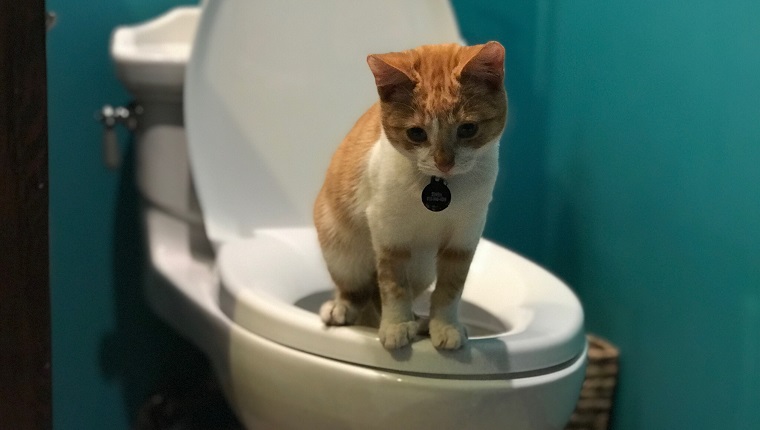How do you actually feel on the subject of Can You Flush Cat Poo or Litter Down the Toilet??

Introduction
As feline proprietors, it's vital to be mindful of how we dispose of our feline close friends' waste. While it might seem practical to purge feline poop down the commode, this technique can have destructive consequences for both the atmosphere and human health and wellness.
Alternatives to Flushing
The good news is, there are more secure and more accountable ways to take care of cat poop. Think about the adhering to options:
1. Scoop and Dispose in Trash
The most typical method of taking care of feline poop is to scoop it into a biodegradable bag and toss it in the garbage. Make certain to use a dedicated litter inside story and dispose of the waste immediately.
2. Usage Biodegradable Litter
Go with biodegradable feline litter made from materials such as corn or wheat. These litters are environmentally friendly and can be safely gotten rid of in the garbage.
3. Hide in the Yard
If you have a backyard, consider hiding feline waste in a designated area far from vegetable yards and water resources. Make certain to dig deep enough to avoid contamination of groundwater.
4. Set Up a Pet Waste Disposal System
Purchase a pet waste disposal system specifically made for feline waste. These systems utilize enzymes to break down the waste, decreasing smell and environmental impact.
Wellness Risks
Along with ecological problems, flushing feline waste can likewise position wellness threats to people. Feline feces might include Toxoplasma gondii, a bloodsucker that can cause toxoplasmosis-- a possibly severe illness, especially for expectant females and individuals with damaged body immune systems.
Environmental Impact
Flushing cat poop presents hazardous virus and bloodsuckers right into the water system, positioning a considerable threat to marine environments. These impurities can negatively affect marine life and concession water quality.
Verdict
Liable pet dog possession extends beyond supplying food and shelter-- it additionally entails proper waste management. By avoiding purging cat poop down the commode and selecting different disposal methods, we can lessen our ecological impact and protect human health and wellness.
Why Can’t I Flush Cat Poop?
It Spreads a Parasite
Cats are frequently infected with a parasite called toxoplasma gondii. The parasite causes an infection called toxoplasmosis. It is usually harmless to cats. The parasite only uses cat poop as a host for its eggs. Otherwise, the cat’s immune system usually keeps the infection at low enough levels to maintain its own health. But it does not stop the develop of eggs. These eggs are tiny and surprisingly tough. They may survive for a year before they begin to grow. But that’s the problem.
Our wastewater system is not designed to deal with toxoplasmosis eggs. Instead, most eggs will flush from your toilet into sewers and wastewater management plants. After the sewage is treated for many other harmful things in it, it is typically released into local rivers, lakes, or oceans. Here, the toxoplasmosis eggs can find new hosts, including starfish, crabs, otters, and many other wildlife. For many, this is a significant risk to their health. Toxoplasmosis can also end up infecting water sources that are important for agriculture, which means our deer, pigs, and sheep can get infected too.
Is There Risk to Humans?
There can be a risk to human life from flushing cat poop down the toilet. If you do so, the parasites from your cat’s poop can end up in shellfish, game animals, or livestock. If this meat is then served raw or undercooked, the people who eat it can get sick.
In fact, according to the CDC, 40 million people in the United States are infected with toxoplasma gondii. They get it from exposure to infected seafood, or from some kind of cat poop contamination, like drinking from a stream that is contaminated or touching anything that has come into contact with cat poop. That includes just cleaning a cat litter box.
Most people who get infected with these parasites will not develop any symptoms. However, for pregnant women or for those with compromised immune systems, the parasite can cause severe health problems.
How to Handle Cat Poop
The best way to handle cat poop is actually to clean the box more often. The eggs that the parasite sheds will not become active until one to five days after the cat poops. That means that if you clean daily, you’re much less likely to come into direct contact with infectious eggs.
That said, always dispose of cat poop in the garbage and not down the toilet. Wash your hands before and after you clean the litter box, and bring the bag of poop right outside to your garbage bins.
https://trenchlesssolutionsusa.com/why-cant-i-flush-cat-poop/

Do you like reading up on How to Dispose of Cat Poop and Litter Without Plastic Bags? Put feedback down below. We would be glad to see your thoughts about this posting. In hopes that you visit us again in the near future. Are you aware of another person who is in the market for the topic? Why not promote it. Many thanks for your time invested reading it.
Get A Quote